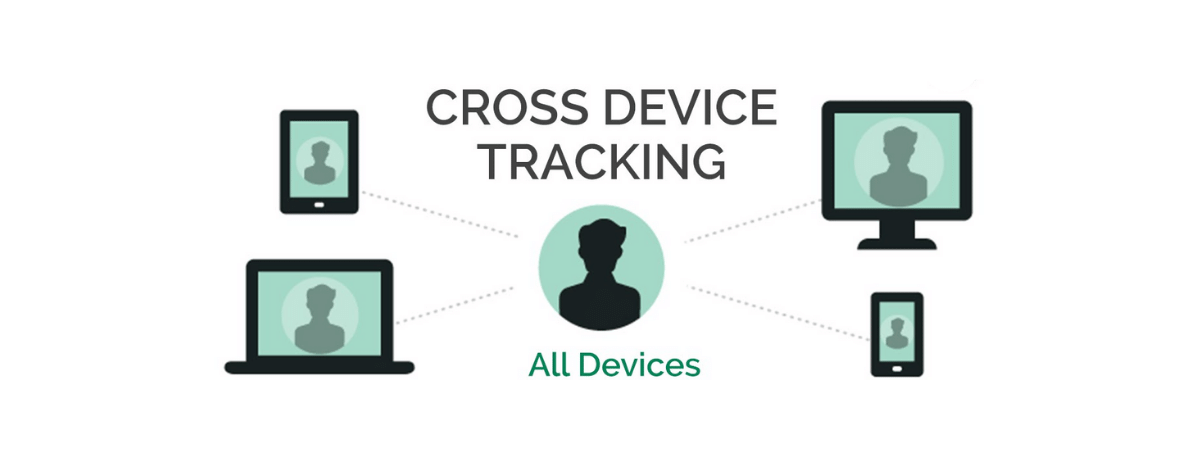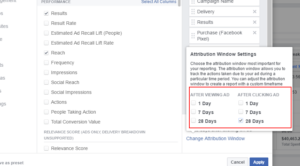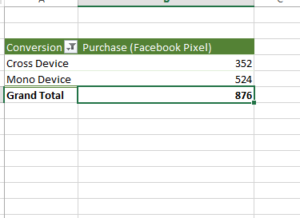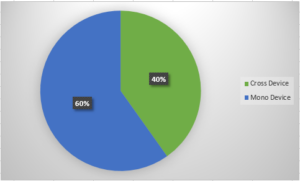
Facebook Cross Device Analysis
Cross-device tracking is still one of Facebook’s biggest advantages over other competitors. Facebook uses cookies in combination with the Facebook ID to identify users across devices. Moreover, on mobile devices, they utilize device identifiers such as Apple’s Identifier for Advertising (IDFA) and Android’s Advertising ID. However, before we start explaining how to conduct the cross-device analysis, I would first recommend having a look at Facebook Advanced Matching to improve your FB pixel measurability.
In this article, we will learn how to perform a cross-device analysis where you can better understand your users’ journey and make the most out of your campaigns. Also, we will explain why the data from Google Analytics and Facebook doesn’t match and the reasons why your Facebook campaign numbers could be underestimated on Google Analytics.
Facebook tends to be more generous with conversion tracking, so before we start I also recommend opting out from “after viewing the ad” attribution model and keep only ” after clicking the ad” as seen below:

So, let’s get down to business:
Breakdown your campaigns by Impression device
This shows you the breakdown of devices people used when they saw your ad.

Add a second breakdown by Conversion device
This shows the breakdown of devices people were using when they took any actions as a result of your ads, in other words where they converted.
Export a report to excel
After you clean up and organize your data, you will have two columns, one for the impression device and another for the conversion device. The impression device column shows where people saw or clicked the ad and the conversion device column shows where people converted. For example, a user can click on your ad from an iPhone device and convert to Desktop Computer. In this case, you will see the impression device like iPhone and the conversion device as Desktop.

Differentiate cross-device conversions
You can use the IF formula to tell excel if the impression device equals the conversion device this means a “mono device” conversion, otherwise, return “cross-device”.

Create a pivot table
Once you create a pivot table, you can now see the aggregated data of your conversion type, how many cross-device conversions happened compared to mono device conversions:

Looking at this specific example, you notice that 40% of our conversions that came from Facebook ads are cross-device conversions which are huge, but it makes sense as the majority of Facebook interactions happen on mobile devices. Imagine seeing an ad for a product on your mobile phone while in line at the bank. Do you immediately make a purchase on your phone? Probably not. But perhaps you go back to your office later that day and buy on your desktop computer. Such cross-device conversions are becoming increasingly common as people move between their phones, tablets, and desktop computers to interact with businesses.

This takes us to one of the most popular questions, why my Facebook data and Google Analytics doesn’t match? The top two reasons as follows:
# Cross-device conversion which is difficult for Google analytics to track, even after implementing the User ID feature, it’s not as accurate as Facebook.
# Different attribution models. Facebook attributes a conversion to the last click that happened on Facebook. On the other hand, Google Analytics attribution model is “last non-direct”, regardless of the channel.
One of Facebook’s biggest advantages over its competition is the ability to link actions to users instead of cookies, this means you can track and target the same user across all their browsers and devices as long as they are signed in to Facebook.
Conclusion
To find the true value of your campaigns, you have to look beyond the last-click attribution model on Google analytics in order to determine the most effective channel for your investment and evaluate the performance of a particular marketing strategy. The modern user journey is complex, understand the multichannel or multi-device journey is crucial to any business. You should be able to track the various touchpoints user take before and after reaching your website, in order to improve your ad targeting and hence your user experience. Facebook cross-device report could be a powerful solution, however, technologies have evolved greatly, so you might consider investing in a cross-device solution to measure the success of your paid social campaigns.

Entrepreneur focused on building MarTech products that bridge the gap between marketing and technology. Check out my latest products Markifact, Marketing Auditor & GA4 Auditor – discover all my products here.


Google article, but, how to determine whether I am to continue to invest on Facebook, crediting all those cross-device conversions that GA does not track, and believing that without a Face campaign those conversions wouldn´t come true?